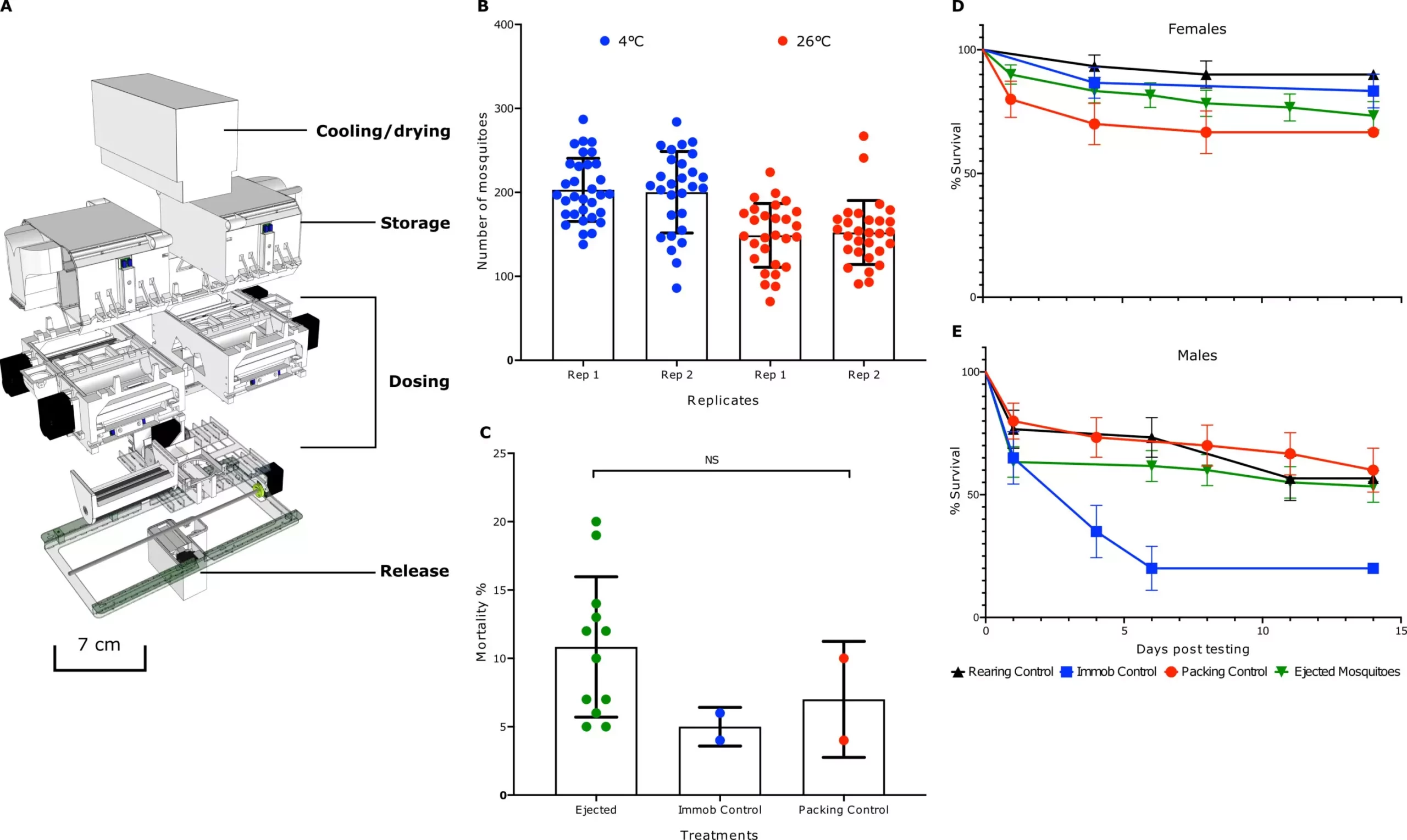Mosquitoes are infamous for being not only a nuisance but also potent vectors of various diseases. From dengue fever to Zika virus, the toll they take on public health is staggering, especially in tropical regions. With climate change and urbanization expanding the habitats of these disease carriers, the challenge of controlling their populations has never been more urgent. Researchers have long sought innovative solutions to curb the spread of these deadly viruses, and a novel approach is emerging that could reshape our ability to combat mosquito-borne diseases.
A Breakthrough in Mosquito Dispersal Techniques
In a groundbreaking study featured in *Science Robotics*, an international research team affiliated with the World Mosquito Program and WeRobotics has developed a drone-based system to release infected mosquitoes more effectively than ever before. This method departs drastically from traditional practices, which often involve manually breeding, infecting, and deploying mosquitoes, a process laden with inefficiencies and risks. The researchers’ innovative container design allows for the mass release of mosquitoes in a controlled and automated manner, thus heralding a new era in vector control.
Designing the Future: The Drone Container
Central to this revolutionary approach is the specially designed container capable of housing up to 160,000 infected mosquitoes. This lightweight apparatus is crafted for drone compatibility, allowing it to traverse vast landscapes where manual release would prove strenuous and impractical. The compartmentalized design, equipped with a smart release mechanism, enables the precise dispensing of mosquitoes, tackling one of the most significant challenges in previous methods: uneven distribution.
What sets this container apart is its advanced features, such as climate control and sedation mechanisms. These are crucial for maintaining the health and viability of the mosquitoes during transport. By ensuring that the mosquitoes remain in optimal conditions until the moment of release, the drone can effectively deliver them to predetermined locations, significantly enhancing the chances of disease spread among local mosquito populations.
Field Trials: A Promising Solution
Field trials conducted in Fiji have demonstrated the potential of this drone technology in reducing mosquito populations. Unlike traditional methods, which often resulted in irregular dispersal patterns and limited efficacy, the drone system facilitated a uniform release, leading to noticeable reductions in mosquito numbers. The results were not just statistically significant; they underscored a practical solution for regions grappling with the incessant threat of mosquito-borne illnesses.
The automated approach addresses multiple drawbacks of manual release, from labor intensity to safety concerns associated with handling infected mosquitoes. By deploying drones, researchers can minimize human exposure to potential infection while ensuring that the infected mosquitoes are spread efficiently over larger geographic areas.
The Role of Automation in Public Health
Jacob Crawford of Verily Life Sciences LLC emphasizes the importance of automation in enhancing the effectiveness of aerial release devices. The incorporation of drones not only streamlines the logistics of mosquito control but also opens the door to rapidly scalable solutions. This innovation could lead to quick responses in the face of outbreaks, delivering infected mosquitoes where they are needed most with unprecedented speed and efficiency.
Furthermore, automating disease control efforts shifts the paradigm from reactive to proactive measures. Rather than simply responding to outbreaks after they occur, health officials can now actively manage mosquito populations, potentially preventing epidemics before they escalate.
A New Era in Disease Control
The development of drone-based mosquito release systems symbolizes a significant leap forward in the fight against vector-borne diseases. As automation technology continues to advance, the application of drones in public health may expand beyond mosquitoes to other areas where pests pose a threat to human health. This could revolutionize how society prepares for and responds to potential pandemics, with precision, efficiency, and effectiveness paramount in our strategies.
The intersection of technology and public health has never been more promising. With innovative solutions like this drone system, we are not just reacting to the challenges posed by mosquitoes; we are taking proactive measures to mitigate their impact, ultimately paving the way for healthier communities worldwide.


Leave a Reply